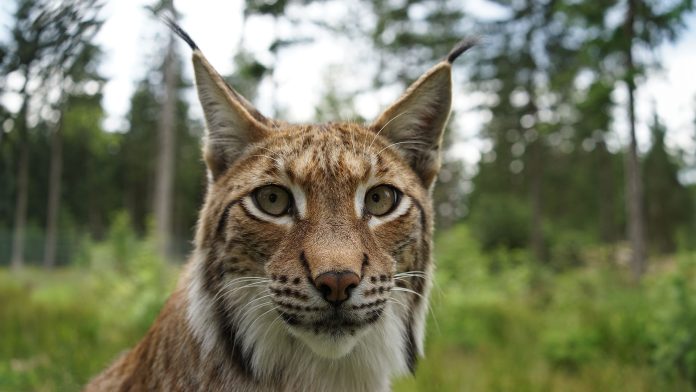He's back: the lynx. At least two of them are now roaming through the Thuringian Forest again. Another 18 animals are to follow and lay the foundation for a healthy lynx population in the region.
Follow us in Social Media
The backstory of the two animal protagonists could hardly be more different: “Aristocats” in real life. On the one hand there is Frieda, a “lynx lady” from the wildcat village of Hütscheroda. She was already born in the enclosure. “Full board” and “health care” included. However, the animal has never seen freedom. Frieda has retained her extreme shyness and that is exactly why she is suitable for the release project.

Not entirely a voluntary immigrant
Things are different with her potential partner Viorel. He is also shy, but above all wild. It was only in March that Viorel approached Romanian conservationists from the Association for the Preservation of Biodiversity (ACDB), into a box trap. Temporary imprisonment. From the Carpathians he traveled to the release reserve in Thuringia. Freedom soon beckoned there. After a few weeks of getting used to it. After a health check and a radio collar, the wild “kuder”, as male lynxes are called, was able to go hunting for deer again in his new territory.

Freedom in installments
So that Frieda and Viorel could get acquainted with each other, they were housed in two separate units of a small “soft release enclosure” for a few weeks. The doors opened on May 15th. Now it's time to keep your fingers crossed that the animals settle in and hopefully smell good! The next few months will have to show whether the olfactory initiation of marriage worked. In the medium term, the range of suitable partners is likely to become more diverse. Because there are more releases scheduled until 2027.
The project
The release is the start of the larger “Luchs Thuringia” project. The comeback of the lynx is supported by the Free State and the EU with funds from the European Agricultural Fund (EULER) financed. The aim is to give the lynxes in the Thuringian Forest a lasting future. There are currently around 130 independent lynxes living in Germany, which are mainly distributed across three distribution areas: the Bavarian Forest, the Harz and, for a few years now, the Palatinate Forest. However, all three regions are at least 250 km apart and are largely isolated from other European lynx populations.
The Thuringian Forest is supposed to form a kind of bridge. Male animals from the Harz or the Bavarian Forest occasionally appear here, but they are usually just passing through. However, a population can only arise where there are females and offspring. However, young female lynx usually only establish their territories in direct contact with the territories of their own species, so that the species has very little chance of spreading. The settled conspecifics are supposed to speed this up. We would like to create a bridge between the lynx populations in the Harz and the Bavarian Forest in order to enable genetic exchange and thus promote the diversity and stability of the lynx populations in Europe.

Don't miss anything with the WWF newsletter!
The reintroduction of the brush-eared bats in Thuringia is a joint project. Next to CONVENTION Thuringia and that WWF Eight other project partners from Germany and Romania are committed to ensuring the long-term return of the lynx.
Follow us on social media:


